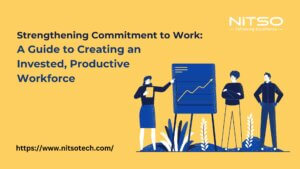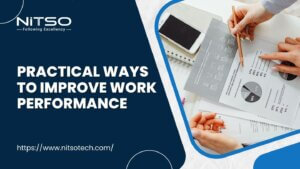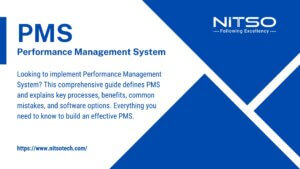Do your efforts to improve poor employee performance often seem fruitless? Have your constructive critiques and coaching led to little lasting change?
If you feel like you’re continuously spinning your wheels, it’s likely you are making some common mistakes that sabotage progress. Addressing performance issues in an impactful, sustainable way requires finesse and understanding.
What mistakes should you be aware of when trying to boost productivity, strengthen skills, and optimize results? By avoiding certain counterproductive approaches, you can set struggling employees up for success instead of disheartenment.
Read on to learn the top mistakes managers make when tackling performance improvement so you can steer clear of unhelpful detours and pave a straight path to positive change.
Avoiding Common Mistakes in Employee Performance Management
Mistake 1: Not Providing Clear Expectations and Goals
One of the most common mistakes managers make when trying to improve employee performance is failing to set clear expectations and goals. Without a transparent understanding of what constitutes successful performance, employees are left guessing as to what exactly they should be working towards. This leads to mistakes and underperformance that could have been avoided with proper guidance upfront.
When addressing performance issues, it is crucial to establish quantifiable metrics and observable behaviours that exemplify meeting expectations. Rather than saying an employee needs to “improve productivity”, provide specific goals such as “complete at least 5 client reports per week” or “maintain an average client satisfaction rating of at least 4 out of 5 stars”.
Along with measurable targets, outline the preferred process and behaviours you want to see. Give clear direction on how to prioritize tasks, collaborate effectively with colleagues, demonstrate initiative, and exhibit other desired workplace habits. Employees often require this level of granular detail and examples to fully understand abstract expectations.
Vague instructions to simply “do better” or “be more efficient” are subject to interpretation and make it difficult for employees to know if they are on the right track day-to-day. Consistently reinforcing concrete goals and preferred methods provides a standard to strive for and better motivates improvement.
Setting unambiguous expectations is the crucial first step in the process of improving employee performance. When addressing performance issues, be sure to avoid potential misunderstandings by establishing quantifiable metrics for success along with specific behavioural and process-oriented guidance. This provides the clarity employees need to actively take steps in the right direction.
Mistake 2: Neglecting Ongoing Feedback
Another mistake managers often make when aiming to improve employee performance is failing to provide regular, informal feedback. Providing feedback only during periodic formal performance reviews misses many opportunities throughout the year to reinforce positive progress and promptly correct issues.
Ongoing feedback should be woven into the day-to-day workflow to help keep employees on track. When you see an employee demonstrating excellent work, take a moment to provide positive feedback and praise their achievement. This reinforces the desired behaviour and motivates them to maintain that level of performance.
Similarly, if you notice a performance gap emerging, have an informal chat to provide constructive critiques early on before negative patterns become entrenched habits. For example, if an employee is consistently late submitting assignments, take them aside to discuss time management skills before it affects their results further.
Catching problems early through real-time feedback increases the chances of quickly resolving them, rather than letting them spiral. Employees are also more receptive to making adjustments if issues are addressed promptly versus feeling surprise or discouragement over revelations during a formal annual review.
Ongoing feedback demonstrates you are invested in the employee’s growth and want to see them succeed. Scheduling regular check-ins shows your support for their development while enabling you to continuously recalibrate their work to keep it optimized. Make feedback a consistent two-way dialogue, not an occasional formal event.
Mistake 3: Failure to Uncover the Source of Problems
When employees are underperforming, managers often make the mistake of focusing on the surface issues rather than taking time to diagnose the underlying root causes. Jumping straight into problem-solving mode without understanding the fundamental reasons behind performance gaps typically leads to ineffective solutions.
To truly improve employee performance in a sustainable way, you need to dig deeper to unravel the origins of the problems. Look beyond the obvious symptoms and ask probing questions to uncover the source factors at play.
For example, what skills or knowledge might an employee lack that is hindering their work? Are there inefficient processes or inadequate tools that make tasks more difficult? Are Outside pressures at home or health issues causing distractions?
Try to understand the employee’s unique perspective to get insight into demotivating factors. Often there are issues with the work environment, expectations, training, or communication that are preventing optimal performance.
This discovery process takes patience and effort but enables you to develop meaningful solutions that target the heart of the problems. The answers may surprise you and reveal opportunities to improve organizational systems, not just individual employee weaknesses.
Make sure to carve out quality time for this diagnostic stage when aiming to boost performance. Rushing to implement generic solutions without understanding root causes typically backfires or provides only temporary band-aids. Getting to the origins of performance issues is the key to sustainable change.
Mistake 4: Attempting Too Much Change at Once
In their enthusiasm to significantly improve employee performance issues, managers often make the mistake of trying to implement too many complex changes at the same time. This typically overwhelms employees and makes it hard for them to sustain so much change.
When addressing underperformance, it’s better to take an incremental approach that sets a few manageable priorities to focus on first. Introduce improvements gradually over time to build sustainable change rather than pushing a sudden radical transformation.
For example, if an employee is struggling with both organizational skills and meeting deadlines, pick one area to concentrate on improving first. Work together to establish a system for maintaining a daily to-do list that enables them to prioritize and schedule tasks efficiently.
Once that habit is established, you can move on to addressing time management challenges through techniques like breaking large assignments into stages with mini-deadlines.
Making too many demands for new behaviour and skills concurrently is often counterproductive, as employees feel confused and make little actual progress. Set realistic expectations by targeting one or two straightforward improvements initially.
As those changes solidify, you can continue layering in additional goals and growth opportunities. With small but consistent steps forward, you build positive momentum and avoid the risk of regression from pushing too fast too soon. Steady and sustainable change is the aim.
Mistake 5: Not Providing Adequate Support
When managers notice declines in employee performance, they often respond by simply telling the employee to try harder or do better work. However, improvement is unlikely if the proper support systems are not in place.
Failing to actively enable employee success is a common mistake when attempting to address performance issues. Beyond just pointing out problems, take steps to set up the conditions and resources for optimal performance.
For example, provide coaching and mentoring to build knowledge and skills. Arrange for training or education opportunities to expand their capabilities. Update workplace technologies and tools to remove obstacles in their path.
Look at what you can do as a manager to foster an encouraging environment, such as allowing flexible schedules, creating peer support systems, or implementing team bonding exercises. Boost motivation by recognizing achievements and giving more responsibility.
Essentially, think beyond just the individual’s efforts and consider how you can adapt the broader work environment and processes to facilitate excellence. If roadblocks exist, it becomes very difficult for employees to accomplish goals no matter how hard they try.
Improving performance is a joint effort requiring managerial leadership and support. Set your employees up for success by being a partner focused on enabling them to do their best work through guidance, development and workplace enhancements. With adequate backing, they will be empowered to thrive.
Failing to Follow Up
Finally, one of the most common mistakes managers make when trying to improve employee performance is failing to follow up consistently. Having just one formal discussion or meeting about performance issues provides insufficient accountability and support.
Ongoing follow-up is crucial to reinforce expectations and track progress. Schedule regular one-on-one meetings with the employee to continue the dialogue rather than declaring victory after one conversation.
Use these meetings to jointly review goals and priorities. Check in on the status of changes and celebrate wins, while realigning course if certain efforts are not working. Ask about any blocking issues that need addressing.
The employee should leave the meetings feeling energized and supported, not anxious or defeated. Focus the discussions on finding solutions together, rather than rehearsing past problems.
Managers who follow up consistently demonstrate commitment to the employee’s growth and give needed nudges to stay on track when old habits creep back in. The employee will feel accountable but also empowered knowing you care about their development.
Make sure once performance issues have been identified, you continue giving attention to achieving resolutions. Don’t let it fade away by assuming things will just improve on their own. With sustained focus and follow-through, you give performance improvement efforts the very best chance of sticking.
Article you might be interested in Performance Management vs. Performance Appraisals: Which Does Your Business Need?
Conclusion
In summary, sustainably improving employee performance requires patience, care, and consistent effort. Avoid hastily implementing generic solutions or overhauling too much at once.
Instead, set clear expectations, uncover root causes, enable gradual change in focused areas, provide ongoing support, and follow up regularly. With compassion and commitment to understanding each employee’s unique needs, you can collaborate to build their capabilities over time. Performance management should be a continuous journey of growth, not an annual event.
Learn from mistakes by taking a systematic approach that empowers employees with resources and follow-through. With diligence and care, you can work together to steadily strengthen performance and achieve shared success.
Frequently Asked Questions (FAQs)
What are some examples of unclear expectations when managing employee performance?
Examples include vague directives like “improve your work”, not providing concrete goals/metrics, and failing to outline expected processes.
How often should managers give performance feedback to employees?
Ongoing informal feedback should be provided regularly, at least monthly if not weekly, rather than just during annual reviews.
How can managers uncover the root causes behind poor employee performance?
Ask probing questions, encourage employees to share their perspectives, analyze workflow processes, assess skills/resources, and identify potential motivational issues.
Why is it better to focus on small changes vs. large-scale overhauls when improving performance?
Gradual, incremental changes are more sustainable. Employees feel less overwhelmed and are able to fully adopt changes over time.
What are some examples of resources managers can provide to enable employee performance?
Coaching/mentoring, skills training, continuing education, upgraded tools/technology, flexible schedules, and work environment enhancements.
How often should managers follow up with struggling employees after a performance discussion?
Consistent, ongoing follow-up is crucial – at minimum, schedule biweekly or monthly one-on-one meetings to provide support.
What positive outcomes can result from addressing performance issues constructively?
Increased productivity, improved skills, higher engagement and morale, reduced turnover, and more effective collaboration/communication.








0 Comments